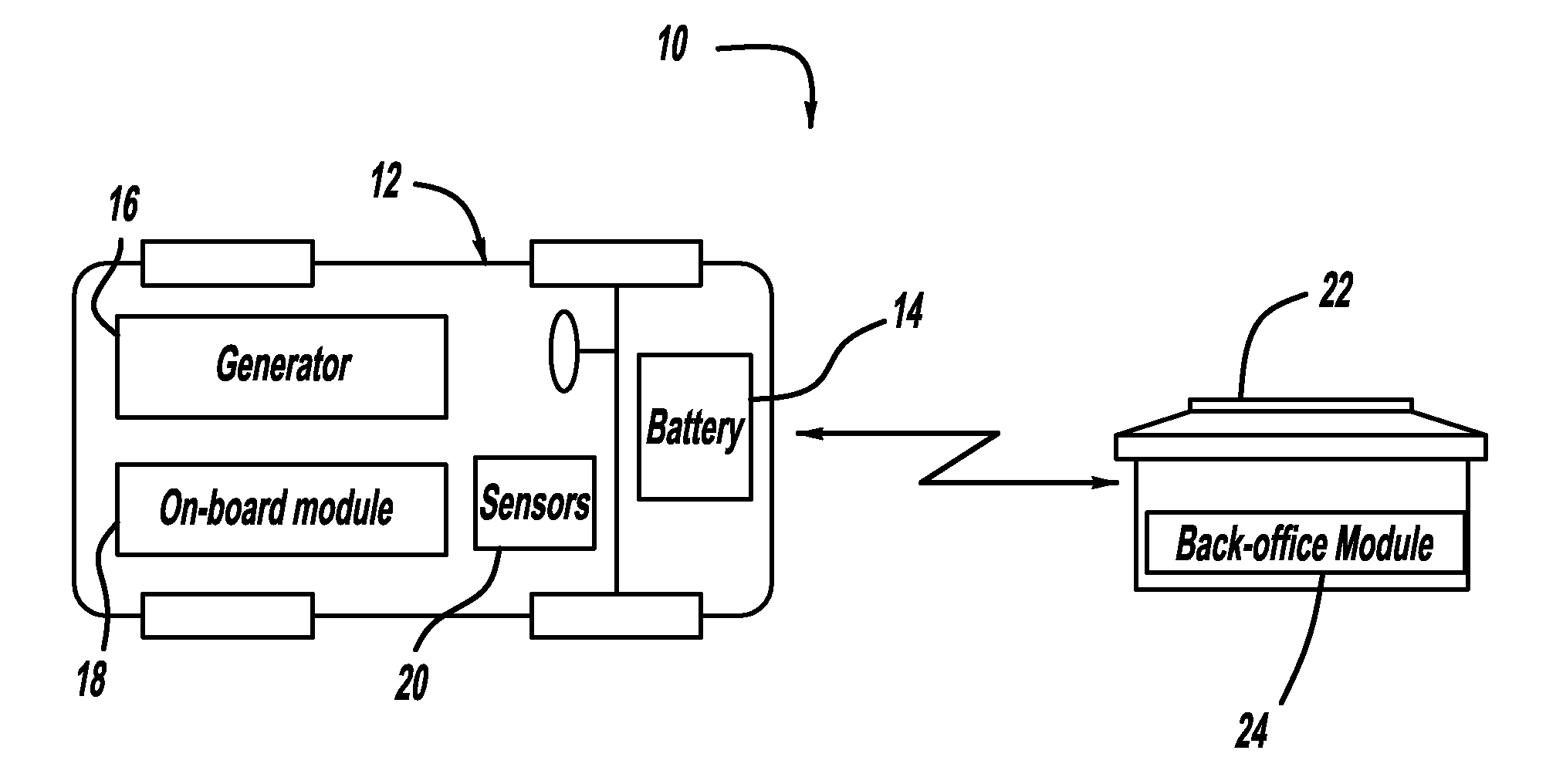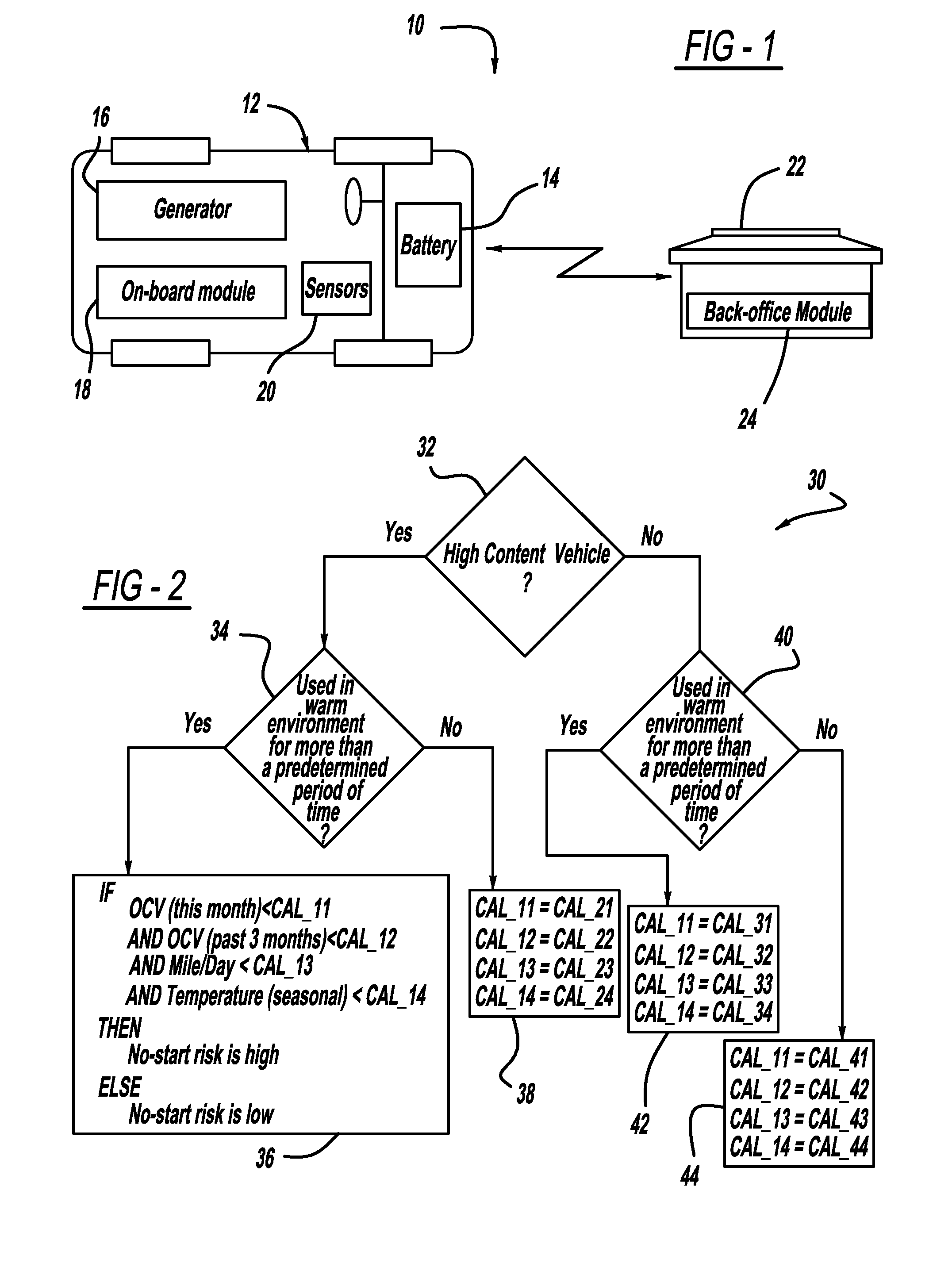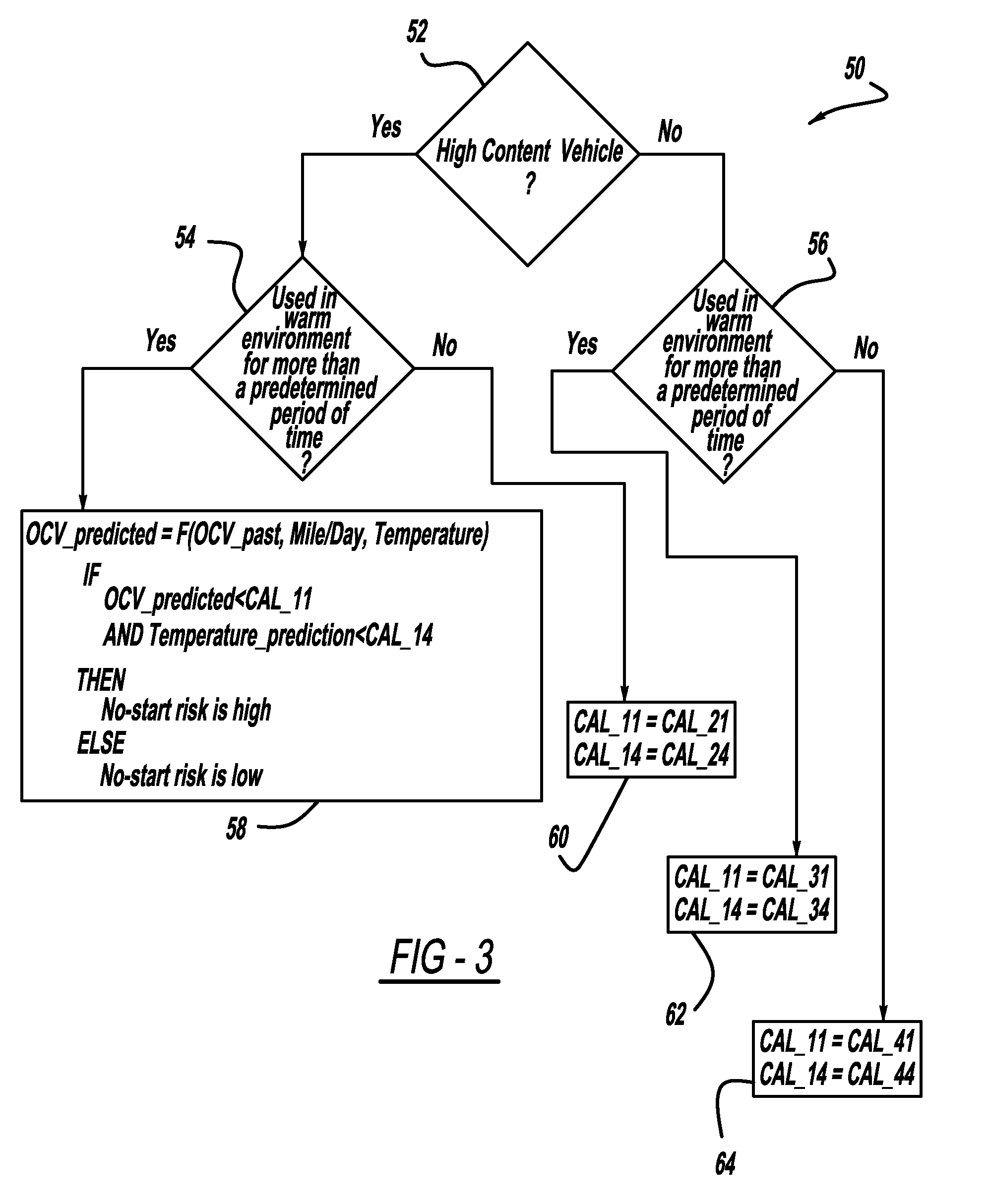Method and apparatus for telematics-based vehicle no-start prognosis
a technology of telematics and vehicle, applied in the direction of transmission systems, instruments, transportation and packaging, etc., can solve the problems of premature battery damage, reduced soc, and inability of batteries to supply the necessary power to start the vehicl
- Summary
- Abstract
- Description
- Claims
- Application Information
AI Technical Summary
Benefits of technology
Problems solved by technology
Method used
Image
Examples
Embodiment Construction
[0017]The following discussion of the embodiments of the invention directed to a system and method for determining battery state of charge is merely exemplary in nature, and is in no way intended to limit the invention or its applications or uses.
[0018]As will be discussed in detail below, the present invention proposes a system and method that collects various data and information about a vehicle battery, determines the state of health of the battery based on the collected information and notifies a vehicle driver that the vehicle battery may not have enough charge to start the vehicle. The vehicle may include an on-board processing module that includes limited processing capability to analyze signals from various vehicle systems and sensors to provide the indication of a vehicle no-start condition. Additionally, the system may include a back-office module having a greater processing capability and storage capability to analyze information about a vehicle battery and communicate te...
PUM
 Login to View More
Login to View More Abstract
Description
Claims
Application Information
 Login to View More
Login to View More - R&D
- Intellectual Property
- Life Sciences
- Materials
- Tech Scout
- Unparalleled Data Quality
- Higher Quality Content
- 60% Fewer Hallucinations
Browse by: Latest US Patents, China's latest patents, Technical Efficacy Thesaurus, Application Domain, Technology Topic, Popular Technical Reports.
© 2025 PatSnap. All rights reserved.Legal|Privacy policy|Modern Slavery Act Transparency Statement|Sitemap|About US| Contact US: help@patsnap.com



